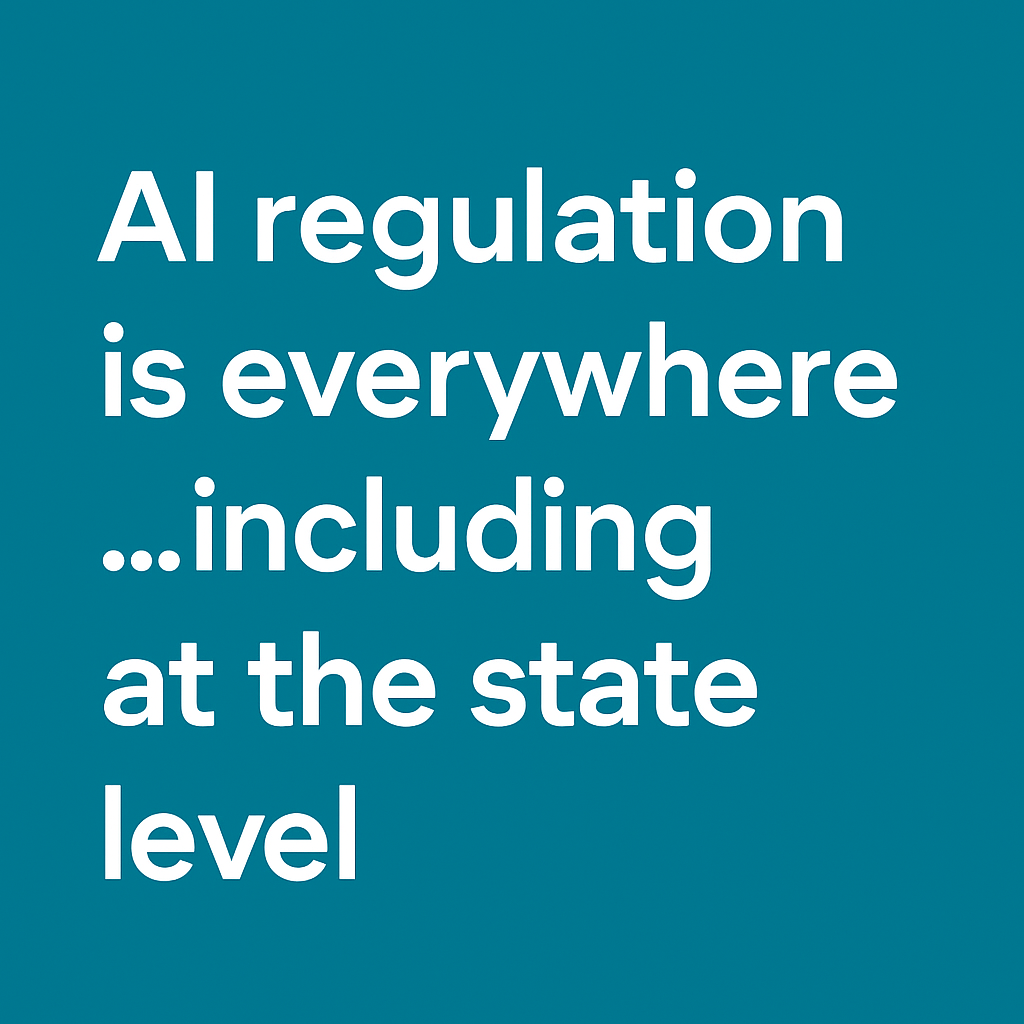First, the European Union (EU) passed the EU AI Parliament Act, then the US developed an Executive Order under the Biden Administration, and now the Trump Administration has created an AI task force. Clearly, AI regulations are being considered at a federal level.
But what about the states?
The states have become much more active in this space, with some signing legislation into law, while others are considering formal regulations. In addition, AI regulations are on the rise globally. According to a recent Stanford study, there is a 21.3% increase across seventy-five countries. 1
To date, seven states have signed rules into law to govern the use of AI. California, Colorado, New York, Maryland, Utah, Texas, and Illinois are the ones that are leading the pack in terms of regulating AI in the area of employment practices and decisions. Most state-based regulations are focused on safety, security, and consumer protections, and anti-bias standards.2 Below are sample summaries of the enacted state regulations and how they address employment practices and decisions.
California
|
Bill number |
Status |
Summary Description |
|
2023 Bill Text CA A.B. 2602 |
Current |
Employment agreements are unenforceable if a provision allows for the creation and use of a digital replica of the worker’s voice or likeness without the worker's or union-level agreement. |
|
OAL Matter Number 2025-0515-01 |
Enacted |
Effective October 1, 2025, an employer’s use of automated decision systems may violate the Fair Employment and Housing Act (FEHA) if it results in discrimination because of a protected characteristic. |
Colorado
|
Bill number |
Status |
Summary Description |
|
2024 Bill Text CO S.B. 205 |
Enacted |
Effective June 30, 2026, an employer must comply with high-risk AI system standards, bias audits for AI systems in employment and insurance |
Illinois
|
Bill number |
Status |
Summary Description |
|
2023 Bill Text IL H.B. 3773, amending the Illinois Human Rights Act (IHRA) |
Enacted |
Effective January 1, 2026, employers are prohibited from using AI in recruiting, hiring, promotion, renewal of employment, selection for training or apprenticeship, discharge, discipline, tenure, or terms and conditions of employment when the AI use subjects employees to discrimination based on a protected class. |
Maryland
|
Bill number |
Status |
Summary Description |
|
2020 Bill Text MD H.B. 1202 |
Current |
Employers must be transparent, follow ethical guidelines, and obtain employee consent to use AI-based facial recognition technology in hiring. |
New York
|
Bill number |
Status |
Summary Description |
|
2023 Bill Text NY S.B. 7676 |
Current |
Employment agreements are unenforceable if certain provisions allow for the creation and use of a digital replica of the worker’s voice or likeness. It is in the provisions relating to the creation and use of the digital replica of the worker’s voice or likeness that is unenforceable if all four conditions are met. |
New York – New York City
|
Bill number |
Status |
Summary Description |
|
NYC Administrative Code § 20-871 |
Current |
Prevention of bias in audits and transparency for Automated Employment Decision Tools systems in hiring and promotions. |
Texas
|
Bill number |
Status |
Summary Description |
|
2025 Bill Text TX H.B. 149 |
Enacted |
Effective January 1, 2026, an employer is prohibited from developing or using an AI system to intentionally discriminate against a protected class in violation of federal law. The bill generally prohibits AI systems from being used to manipulate human behavior, engage in social scoring, uniquely identify individuals without consent, or discriminate against protected classes. |
AI regulatory focus has been centered around employment bias and discrimination, but the focus could likely broaden in the coming months and years to help address specific concerns for each industry.
If each of the fifty states develops a unique version of their own AI regulations on each specific topic, the result would likely add tremendous complexity for firms attempting to comply throughout the US holistically. In more established regulatory industries such as finance, FINRA and the SEC are considering adopting AI standards within their current regulations, despite proposals for regulations being withdrawn in the current administration.
Clearly, both the federal and state governments recognize that AI has the potential to impact our lives and understand the need for some form of regulation to protect citizens. What remains unclear is how those regulations will take shape, how they will work together, and how firms working in all US states will comply.
Sources:
1. Stanford University The 2025 AI Index Report | Stanford HAI
2. AI laws by state and locality | 50-state chart | Brightmine, September 8, 2025.
The opinions provided are those of the author and not necessarily those of Fidelity Investments or its affiliates. This information is general and educational in nature, is for informational purposes only, and should not be construed as legal advice. No warranties are made regarding the information, and recipients should not act or refrain from acting based on the information.
1225584.3.0


-1.png)


